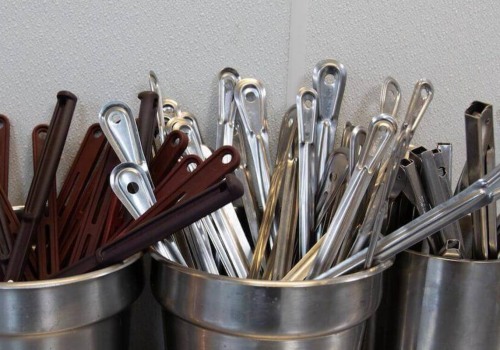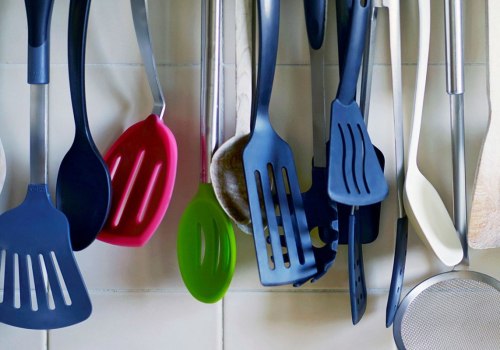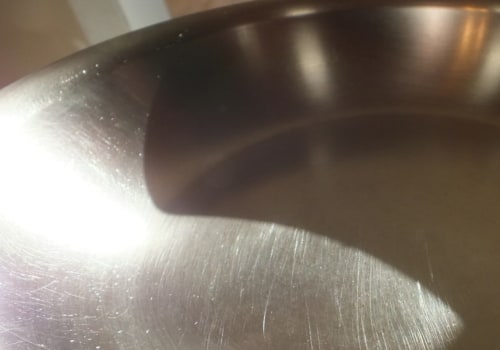If you're looking to invest in quality kitchen tools, it's important to understand the different materials available on the market. From metals to woods, glass and synthetics, there are many options to choose from. We'll explore the pros and cons of each material, which ones are safe to use and which are not, so you can make an informed decision. Nylon is a synthetic material that is a poor conductor of heat, making it a popular choice for spoons, spatulas, and other kitchen utensils.
According to the FDA, silicone products are safe to use and are widely used for carpets, spatulas, spoons, beaters, and more. Steel is an alloy of iron and carbon, while adding 10.5% chromium will make it stainless steel. Food-grade stainless steel must contain 16% chromium. Nickel is sometimes added to increase the characteristics of stainless steel and it is also mixed with other metals such as aluminum and copper to increase its conductivity. Wooden kitchen utensils have been in use for thousands of years and are mainly used for stirring and serving utensils such as spatulas, spoons, plates, and more.
Glass utensils are becoming increasingly popular due to their attractive appearance and are mainly used for pans, plates, cups, and more. Teflon is a coating used to make utensils non-stick while aluminum cookware is also commonly used. Untreated aluminum cookware is not safe to use but aluminum cookware coated with stainless steel or with a non-stick or anodized coating is safer. Plastic utensils are used in almost every kitchen in the world but it's best to avoid plastic utensils other than nylon and silicone as much as possible. Wooden and plastic handles are the most common because they have most of the above properties, are inexpensive, and are readily available.
Glass is considered one of the safest materials for cooking food because it does not release any harmful chemicals. Anodized or coated stainless steel may release a small amount of nickel or cadmium when used improperly but there is no evidence of serious health problems when using improved stainless steel utensils. It's best to avoid stainless steel that contains nickel if you're allergic to nickel. Silicone sits on top because it doesn't leak any chemicals into food and is resistant to cracking while wood, bamboo, and nylon don't leak any chemicals either but can crack over time and harbor bacteria. There are many grades of stainless steel on the market today. Steel is made by adding carbon to iron while 10.5% chromium is added to give it the name stainless.
For stainless steel to be food grade, it must contain at least 16% chromium. Nylon and silicone are popular materials for kitchen utensils but there are some differences between them: Nylon is a synthetic material that is a poor conductor of heat while silicone is composed of quartz sand, carbon, hydrogen, oxygen and perhaps more elements. A kitchen utensil is a small hand tool used to prepare food. Common kitchen tasks include cutting food to size, heating food on an open fire or on a stovetop, baking, grinding, mixing, mixing, and measuring; different utensils are made for each task. To help you know exactly which tools to start with we've created a Kitchen Essentials checklist for you that describes the uses of 20 basic kitchen utensils. The 19th century saw an explosion in the number of cookware available on the market with many labor-saving devices being invented and patented throughout the century.
Cast iron cookware is less prone to rust by avoiding abrasive scrubbing and prolonged soaking in water to build up your seasoning layer. Whenever someone goes to the market to buy kitchen utensils there are many materials to choose from. James Frank Breazeale denounced the explosion of patented labor-saving devices for the modern kitchen promoted at exhibitions and advertised in Household Guides in the early 20th century saying that the best way for a housewife to peel a potato for example is the old-fashioned way with a knife and not with a patented potato peeler. The advantages of aluminum over other cookware materials are its good thermal conductivity which makes it ideal for cooking food evenly without hot spots. Aluminum cookware also has good heat retention which helps keep food warm longer after cooking.
In conclusion, there are many materials available on the market for kitchen tools from metals to woods glass synthetics nylon silicone steel wood glass teflon aluminum plastic stainless steel cast iron aluminum cookware nylon silicone wood bamboo glass anodized stainless steel coated stainless steel plastic utensils wooden handles plastic handles glass cookware teflon coated aluminum cookware untreated aluminum cookware stainless steel containing nickel. It's important to understand the pros and cons of each material so you can make an informed decision when investing in quality kitchen tools. Silicone sits on top because it doesn't leak any chemicals into food and is resistant to cracking while wood bamboo and nylon don't leak any chemicals either but can crack over time and harbor bacteria.



